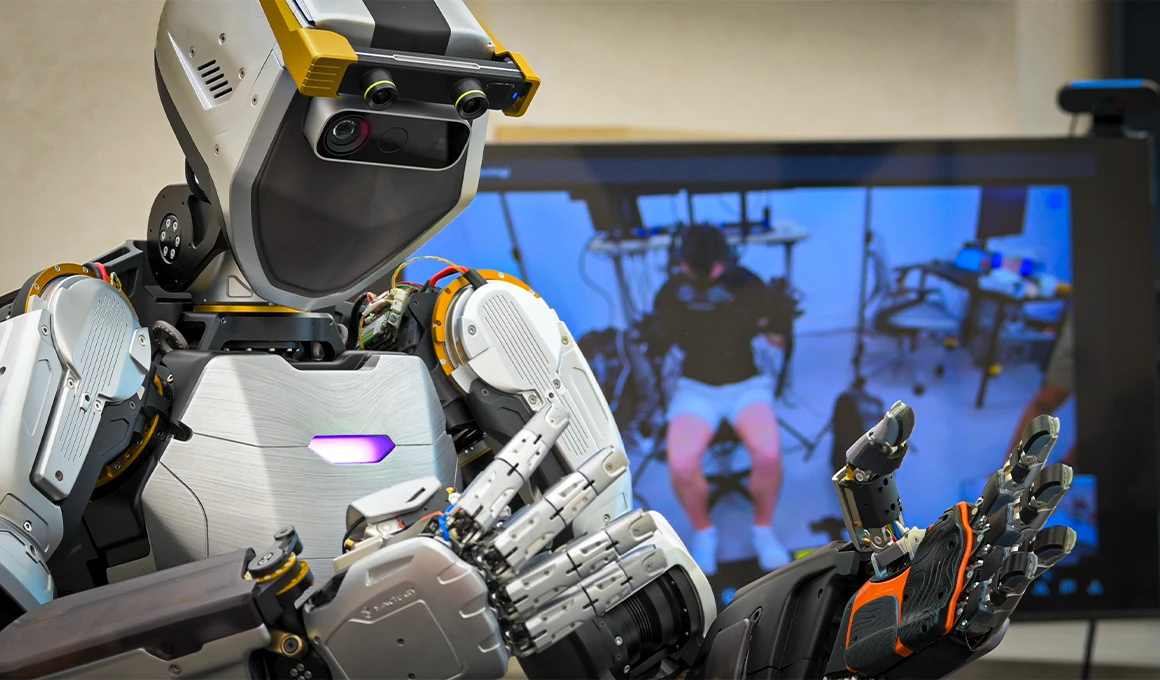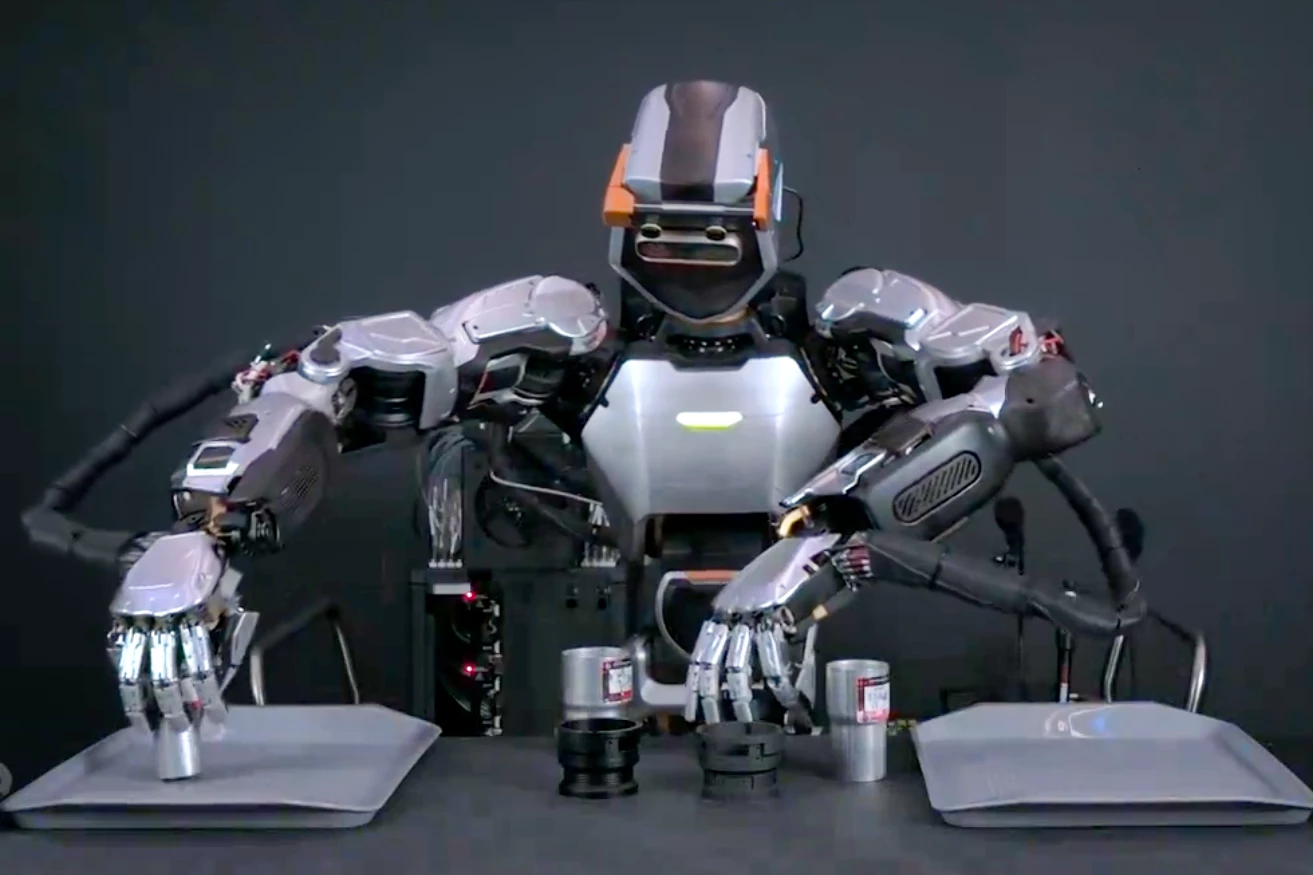You've seen a ton of videos of humanoid robots – but this one feels different. It's Sanctuary's Phoenix bot, with "the world's best robot hands," working totally autonomously at near-human speeds – much faster than Tesla's or Figure's robots.
Canadian company Sanctuary AI has been accelerating its own progress toward general-purpose humanoids, using teleoperation to show Phoenix how to do things, and letting it go away and figure out more in simulation.
Phoenix is an odd duck in this space, in that the Sanctuary team hasn't got it up and walking yet, deciding to let others figure that bit out so its team can focus on the nitty gritty of work behaviors. Thus, it sits on a decidedly unsexy wheeled platform, but it has some of the most finely-tuned and human-like hands out of anything we've ever seen.
And it's also starting to move in a way that's much faster, more fluid and natural-looking than anything else in the space. Take a look – and remember, this is fully autonomous. Phoenix has been trained by human operators, but now it's doing this task all by itself.
Powered by Carbon, Phoenix is now autonomously completing simple tasks at human-equivalent speed. This is an important step on the journey to full autonomy. Phoenix is unique among humanoids in its speed, precision, and strength, all critical for industrial applications. pic.twitter.com/bYlsKBYw3i
— Geordie Rose (@realgeordierose) February 28, 2024
That kind of motion feels like a marked step change in the humanoid field. It's pretty dang impressive. But how has Phoenix accelerated past the pack here?
We spoke to Sanctuary co-founder and CTO Suzanne Gildert in an extensive interview last week, and look forward to bringing you that whole chat shortly – but one thing we discussed was the unique approach Sanctuary is taking to the challenge of teaching Phoenix how to do... Well, pretty much anything we can do.
Phoenix's hands, Gildert told us, are hydraulically actuated as opposed to the electric motors in others like Optimus and the Figure 01. "We moved over to hydraulics," she said, "and there's disadvantages there, they leak and they're very expensive to do R&D on. But it's the only technology that gives us a combination of three factors that are very important: obviously precision, but there's also speed and strength."
"If you see a robot doing something really dexterous," she continued, "like threading a needle, or doing a button or something, you have to ask yourself, could that hand also lift a 50-pound suitcase? And could it also move fast enough to, say, type on a keyboard? Usually people only show one of these three factors, but the ultimate hand needs to have all three. Currently, the hydraulic technology's the only one that can get you all three of those."
"The one we've built, I think is the ultimate," she grinned. "The world's best robot hand. But there's probably plenty of research you can do on a simpler hand as well."
Those hands are indeed extraordinary in motion, and with the hardware looking extremely capable, the team has been focused on creating the building blocks of movement. Where other groups have gone straight to full task training, Sanctuary has been working on the absolute basics in a way that Gildert compares to a baby playing with toys dangling over the crib.
"When you do this sort of learning on grasping data from teleoperation, you find these common movements of the hand start coming out," she explained. "Like, when machine learning people train vision algorithms, you find common features coming out of images; things like edges, corners and little patterns, the building blocks of all images. When you train on data coming from hands, you find that all hand movements are combinations of these basic movements we call Eigengrasps, which, if you combine them in different ways, allow your hands to do anything.
"There's 31 to 33 different grasps that the human hand can do. And with our learning algorithms, we're trying to see if it comes up with the same 33 that have been put forward by physiotherapists and the medical field for the human hand. Power grasps, prismatic grasps where the fingers are spread. Pinch grasps, precision grasps, there's a whole bunch of them separated into a whole taxonomy of grasping. So when we were trying to design our robot hand, we tried to design one that could do all 33 of these motions that are primary to human interaction with the world."

By concentrating on the absolute fundamentals, Sanctuary is building up Phoenix's capabilities in a super-granular fashion, which Gildert says might be slow to get going, but should show a wild rate of acceleration as the robot begins to make connections between movements and broaden its capabilities.
Whatever the case, the way this thing moves in the X post released today is profoundly different to other humanoids in the space, and it certainly seems to validate the approach. We look forward to watching a lot more in the near future!
Fascinating stuff. We look forward to bringing you the full interview soon!
Source: Sanctuary AI





